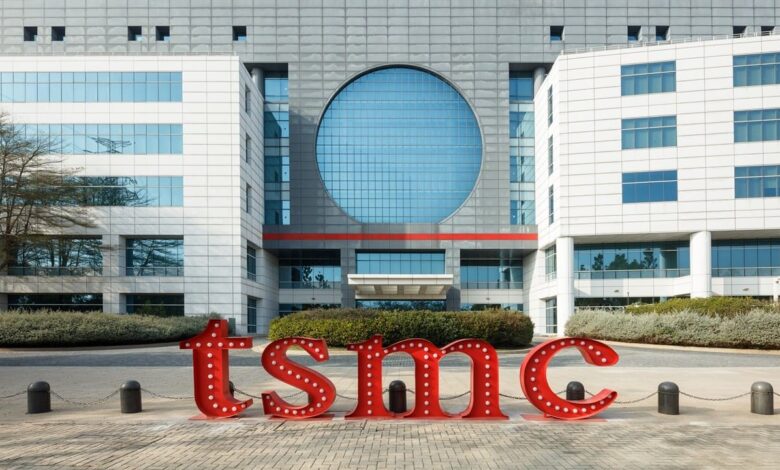
Insights At a Glance:
- Xiaomi and Lenovo face new roadblocks as US restrictions cut off access to essential chip design tools, threatening the production of their advanced processors at Taiwan’s TSMC.
- TSMC can no longer manufacture high-end AI chips for Chinese companies, thanks to expanded US export controls that also limit updates and support for US-made design software.
- With rising pressure, Chinese firms turn to homegrown and even hacked tools.
The smartphone in your hand or computer on your desk might soon tell a deeper geopolitical story than you think — especially if it’s a Xiaomi or Lenovo. In a sweeping escalation of US tech restrictions, Chinese tech giants like Xiaomi, Lenovo, and Bitmain are now in the crosshairs of a new chip design crackdown — one that could disrupt how the next generation of AI-driven devices is made and where they’re headed.
But what does all this have to do with Kenya and Africa at large? A lot more than you might imagine.
The US Cracks the Whip
Earlier this year, the U.S. Bureau of Industry and Security (BIS) quietly delivered what may become one of the most consequential blows to China’s tech ambitions: it barred American companies from supplying electronic design automation (EDA) tools — the software that chip designers use to model, test, and perfect their silicon masterpieces.
According to a Financial Times report, Xiaomi, Lenovo and other Chinese tech giants can no longer access essential EDA software tools provided by American firms like Synopsys and Cadence. These tools are the lifeblood of modern chipmaking — the kind used to craft everything from AI chips to mobile processors.
Why does that matter?
Because nearly every cutting-edge chip — including those in your smartphone, laptop, and smart fridge — depends on these U.S.-origin tools. And that includes chips made by Xiaomi, who just unveiled its in-house XRING O1 processor, a breakthrough chip built using TSMC’s 3-nanometer process. Lenovo and Bitmain, too, rely on Taiwan’s TSMC and the now-blocked U.S. software to bring their advanced chips to life.
The message from Washington? “No more future updates. No more technical support.”
While current licenses aren’t revoked (yet), it’s a death knell for next-gen innovation unless Chinese companies find alternatives fast. The ban doesn’t just block future software updates. It cuts off technical support, rendering it nearly impossible for Xiaomi to keep building cutting-edge chips at Taiwan’s world-class foundries, like TSMC. That’s a big deal.
Why This Matters to Kenya and Africa
Xiaomi isn’t just some far-away brand; it’s becoming a household name across Kenya and Africa. Affordable smartphones? Check. Smart TVs? Check. Ecosystem products from power banks to smart home gear? Triple check.
Late last year, Xiaomi announced aggressive plans to grow its African footprint — and Kenya is a key frontier. With the XRING chip, Xiaomi was hoping to boost performance while lowering costs across its flagship lineup. But now? Those chips might never leave the lab.
Lenovo, already a familiar face in the region thanks to its laptops and tablets used in offices and schools alike, is in a similar pickle. Its ability to custom-design advanced chips is now deeply restricted, which could affect product quality, pricing, and availability in the near future.
The African digital economy — projected to hit $712 billion by 2050 — thrives on affordable, high-quality tech. If companies like Xiaomi and Lenovo stumble in their chip supply chains, consumers in Nairobi, Accra, and Lagos could feel the ripple effects.
Adding fuel to the fire, the U.S. Federal Communications Commission (FCC) recently barred Chinese-controlled labs from certifying devices for the U.S. market. Dubbed “Bad Labs” (yes, seriously), these test centers are allegedly connected to the Chinese military and had previously been certifying thousands of gadgets—including smartphones, routers, and IoT devices—bound for American consumers.
Why does this matter for Kenya and Africa? Because a huge chunk of global electronics are still tested and certified in China. 75%, in fact. The ripple effect of blocking those labs could slow down global supply chains—and yes, that means our gadgets, too.
It also raises bigger questions. If a device isn’t U.S.-certified, will it be allowed into American-linked networks, infrastructure, or software ecosystems? That’s a potential bottleneck for any tech company trying to go global.
Huawei’s Flashback
This isn’t the first time we’ve seen this geopolitical tech drama unfold.
Remember Huawei? Once a top-tier brand in Kenya and beyond, Huawei was essentially booted from the global smartphone race after the Trump-era ban cut off its access to Google and key U.S. tech. The company pivoted to developing its own EDA tools and chip designs, and while it’s been quietly pushing forward, the Ascend AI chips and HarmonyOS haven’t (yet) replaced Android and Snapdragon in mainstream global markets. 9 other Chinese companies were also blacklisted a couple of years later, Xiaomi among them.
If Xiaomi and Lenovo don’t find workarounds—fast—they could face a similar fate.
Enter China’s Plan B
China isn’t standing still. The FT reports that local EDA software makers like Empyrean Technology, Primarius, and Semitronix are rapidly growing. Huawei and others have been backing them heavily. Are these tools on par with Synopsys and Cadence? Not quite—but for 7nm chips and above, they’re “usable,” say insiders.
And here’s where it gets spicy: Some Chinese companies have reportedly been using hacked versions of U.S. EDA tools. One analyst even claimed it’s “very easy” to crack these platforms to access core algorithms. “It is very easy to hack into the system to get the support you need, and the underlying algorithm to build innovation on top of it.”
Will that trick fly long-term? Probably not. The latest U.S. restrictions are laser-focused on stopping exactly this kind of workaround.
With rising tech ambition across the continent, these restrictions arrive at a critical moment. But if Xiaomi and Lenovo can pivot quickly—by embracing Chinese EDA tools, rerouting chip production, or doubling down on mid-range designs—they may weather the storm. Still, it’s clear that the chip wars are no longer just about who builds the best AI. They’re about who gets to build anything at all—and how that affects us.
From smartphones to laptops, Africa’s tech consumers are now part of a global supply chain struggle that’s as much about code as it is about control.






